Love affair with ‘rare’ houseplants sprouts in Hamilton and beyond during pandemic
Published August 14, 2023 at 9:03 am
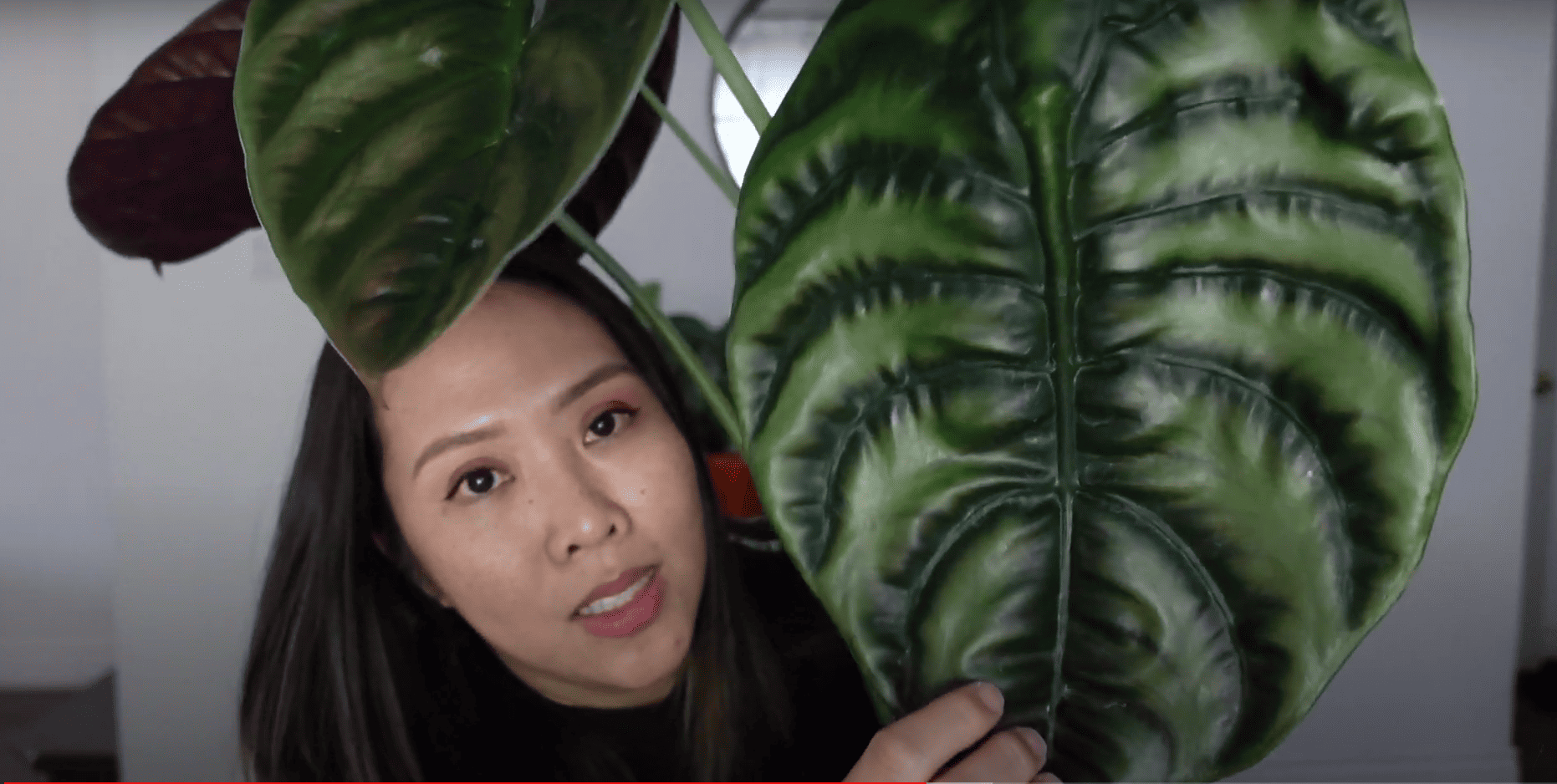
Wandering inside a garden centre in Hamilton, you can spot plants with long, dark leaves randomly splashed with bright pink.
The Philodendron Pink Princess was once considered a “rare” or “it” plant during the pandemic. Today, its prices, even for highly variegated specimens, have dropped, selling for under $25 for a 3.5-inch pot at Harper’s Garden Centre or even cheaper in other places depending on size.
Jessica Burrell had bought one for $15 pre-pandemic in another store before she started her current job as manager of the tropicals plant section at the garden centre. In October 2020, Harper’s had Pink Princesses for sale in eight-inch pots for $549.99. She said a six-inch specimen at her store sells for $30 today.
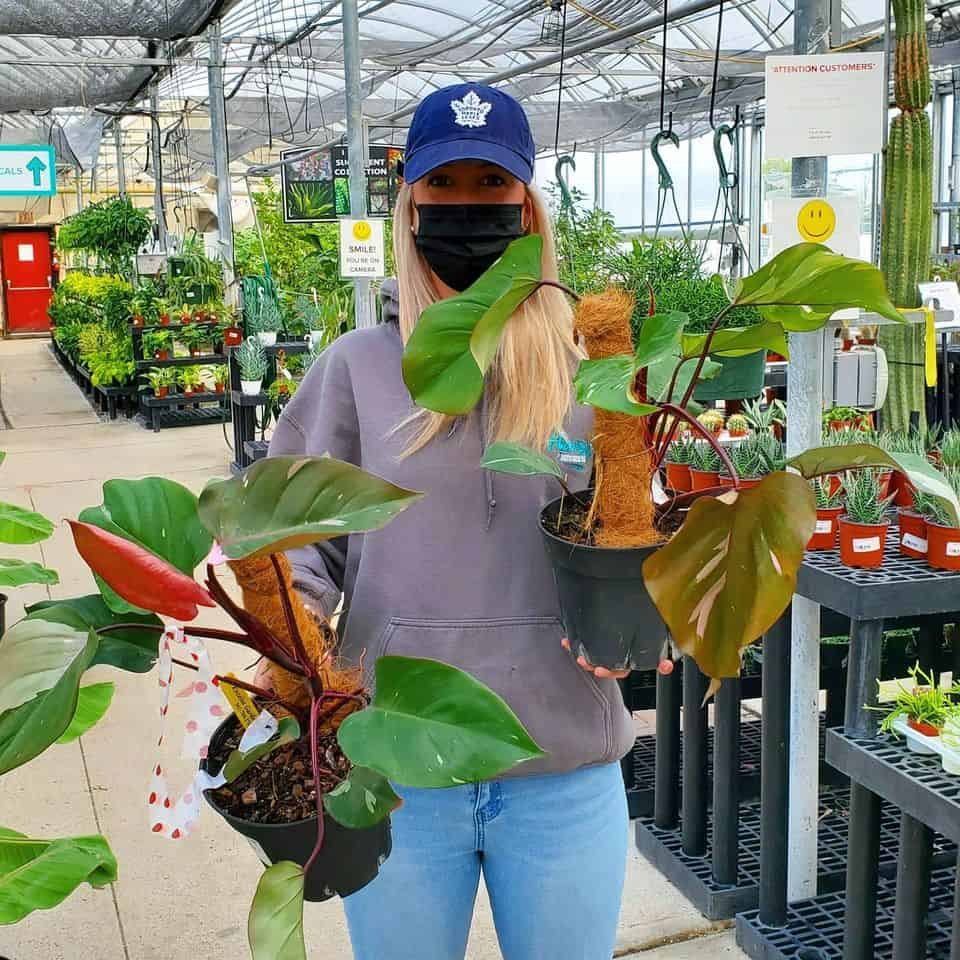
In October 2020, Harper’s Garden Centre had these Philodendron Pink Princesses for sale in eight-inch pots for $549.99. Today, a six-inch specimen at the store sells for $30. COURTESY HARPER’S GARDEN CENTRE VIA FACEBOOK
“Because everybody was at home and wanted something to do, houseplants took off quite significantly and the prices skyrocketed for plants that pre-pandemic were normally priced,” said Burrell, who is a collector of “rare” or unique houseplants herself, in a phone interview with inthehammer.com. She was not able to provide numbers, such as sales figures. “The market has very much stabilized back to what it was … pre-COVID.”
Even though the “rare” plants market has cooled since its pandemic peak, some shops and garden centres in Hamilton and around the country have continued to carry the unique varieties that commanded much higher prices a few years ago.
During the pandemic, the houseplants market in Hamilton, Canada and globally saw booming demand. In particular, varieties dubbed as “rare” plants saw prices skyrocket, with many commonly selling for $100 and over – some even for thousands of dollars. Think of designer versions of houseplants coveted for their perceived exclusivity, their looks and the FOMO factor. Many of these “rare” plants require a higher level of care, such as moss poles or something to climb to get bigger leaves, more humidity or grow lights to promote variegation and encourage them to size up.
Some are cheaper now in part because they were tissue cultured, a process that allows plants to be mass produced through cloning without seeds such as by using plant cells and tissues. Still, industry observers said the love affair isn’t quite over. Those plants that are harder to find and considered collector specimens today are found at higher price points than common varieties, even if many of their prices declined.
“We just don’t see them flying off the shelves as often as they were,” said Brittany Devos, greenhouse manager at Terra Greenhouses in Hamilton, in a phone interview with inthehammer.com. “When we first brought the Thai Constellation Monstera into our store, we actually couldn’t keep it in stock.”
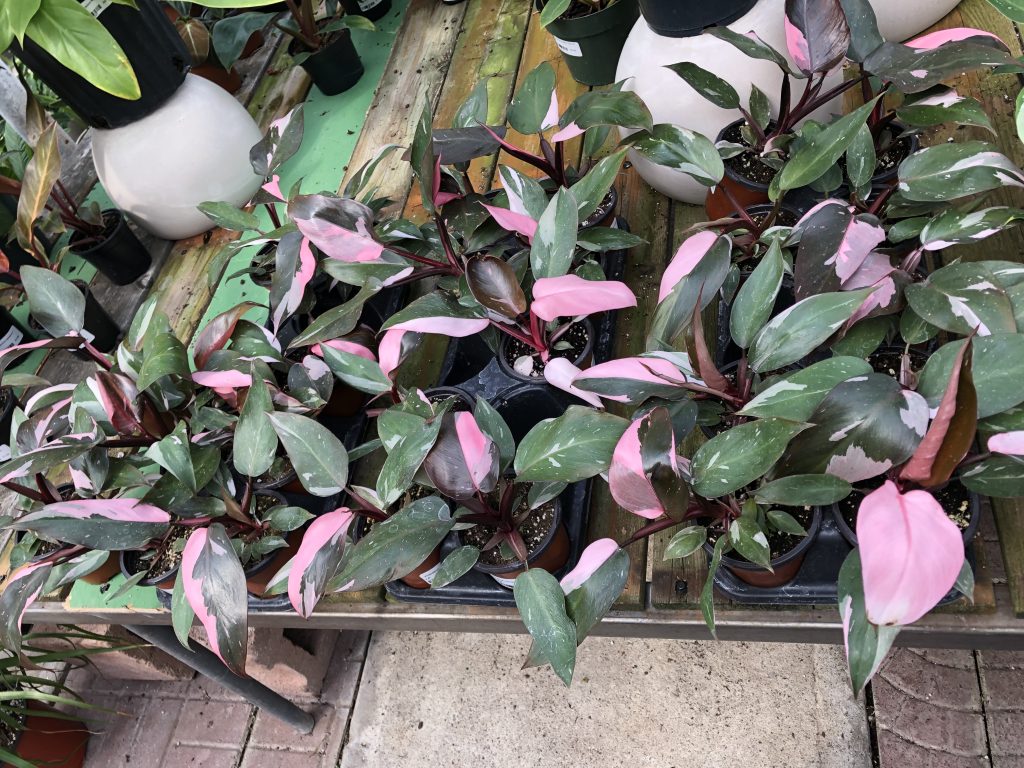
Philodendron Pink Princesses were one of the “it” plants during the pandemic. Their prices have since dropped at shops such as Harper’s Garden Centre in Hamilton. CHRISTL DABU/INTHEHAMMER.COM
She said there’s a niche market for rare plants, especially variegated ones, such as Thai Constellation Monstera, Variegated Frydek Alocasia and an Albo Pothos, which retail from $80 to $100 at Terra.
Devos said her store only started selling “rare” plants in the winter of 2021 in response to a rise in interest. She observed that the interest has dipped a bit now that people are spending more money on other activities such as travel.
“Especially with COVID and stuff, we were noticing a lot more people had a lot more interest on the rare (tropicals) as opposed to your generic Bird of Paradise,” she said. “They were more going for the stuff that were a little bit higher price point and a little bit more variegated as well. … We’ve seen a lot more varieties come in and a lot more people asking for different varieties as well. So we’ve been trying to source that as well.”
But those in the industry said many of these “rare” plants weren’t rare before the pandemic. “The weirdness with COVID was that plants that weren’t really all that rare, they sort of became rare,” Burrell explained. “There was scarcity basically of them and everybody wanted them so much that the prices went up.”
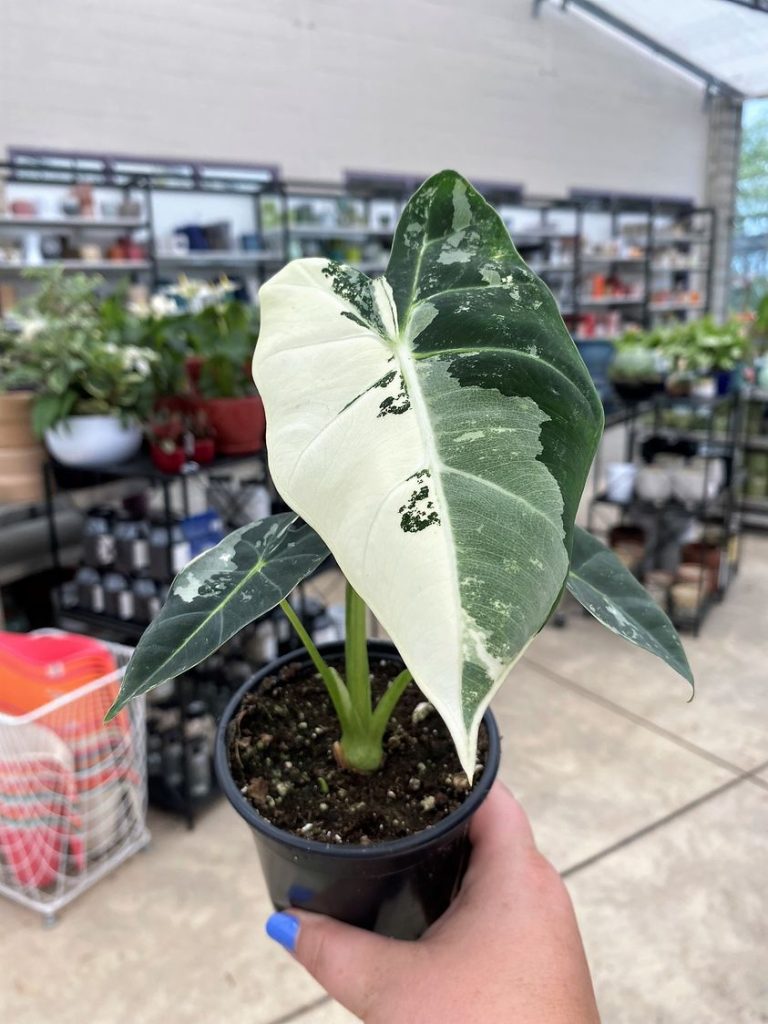
To respond to the demand, Terra Greenhouses brought in rare plants, especially variegated ones, such as Variegated Frydek Alocasia, pictured, Thai Constellation Monstera and an Albo Pothos, which retail from $80 to $100. COURTESY TERRA GREENHOUSES VIA FACEBOOK
Price of ‘rare’ plant crashes from $1,500 during pandemic to $100
Jeddahn Escarian and Holly Price started Plant Bro, their own rare plant shop in Hamilton during the start of the pandemic to cater to the growing demand. They noted that during the pandemic, the “rare” Variegated Monstera Adansonii was selling for $1,500 for a one-leaf cutting that may not be fully rooted so there was a risk it would never grow into a full plant. The plant has cream and white random patterns of variegation mixed with green that could make them look like works of art.
“We identified our niche market and started importing plants from different parts of the world, with a particular emphasis on collecting hoyas,” said Price in an email to inthehammer.com. “Today, all the plants in our inventory are propagated in-house from our extensive collection of hoyas and some aroids.”
Many of these “rare” houseplants today have become more common, with some now found in local garden centres and even big box stores. In many cases, they have fallen in price, partly because of the increase in supply thanks to tissue culturing that enables them to be cloned in greater quantities and due to lower demand as some pandemic houseplant parents abandoned or cut back on the hobby.
A Variegated Monstera Adansonii still isn’t cheap like a common Spider plant, but can sell for around $100 for a fully rooted plant.
“These have really seen a huge decline in price,” said Escarian, co-owner of Plant Bro, in an email to inthehammer.com. “The price of plants has significantly reduced from the height of the pandemic from thousands and hundreds of dollars back down to the price ranges of $5-$100 for most species on the market today.”
Escarian observed that during the pandemic people took up the plant hobby because they were locked down at home, non-essential retailers like garden centres and nurseries were closed, and many found themselves bored and needing a “calming atmosphere during uncertain times.”
“While many enthusiasts have sustained their interest in plants, the initial surge of new hobbyists has subsided to some extent,” he said.
The pandemic also spawned “a large surge in the creation of online plant communities on social media platforms” where people could share their interests and make new friends, he added, which contributed to the hype around rare plants.
“For some individuals, owning rare houseplants has become a symbol of status and exclusivity,” he said. “Displaying these unique and sought-after plants in their homes or on social media has become a way to showcase their taste, knowledge, and dedication to the hobby. The pursuit and acquisition of rare plants have become a form of personal expression, allowing enthusiasts to establish their individuality within the plant community.”
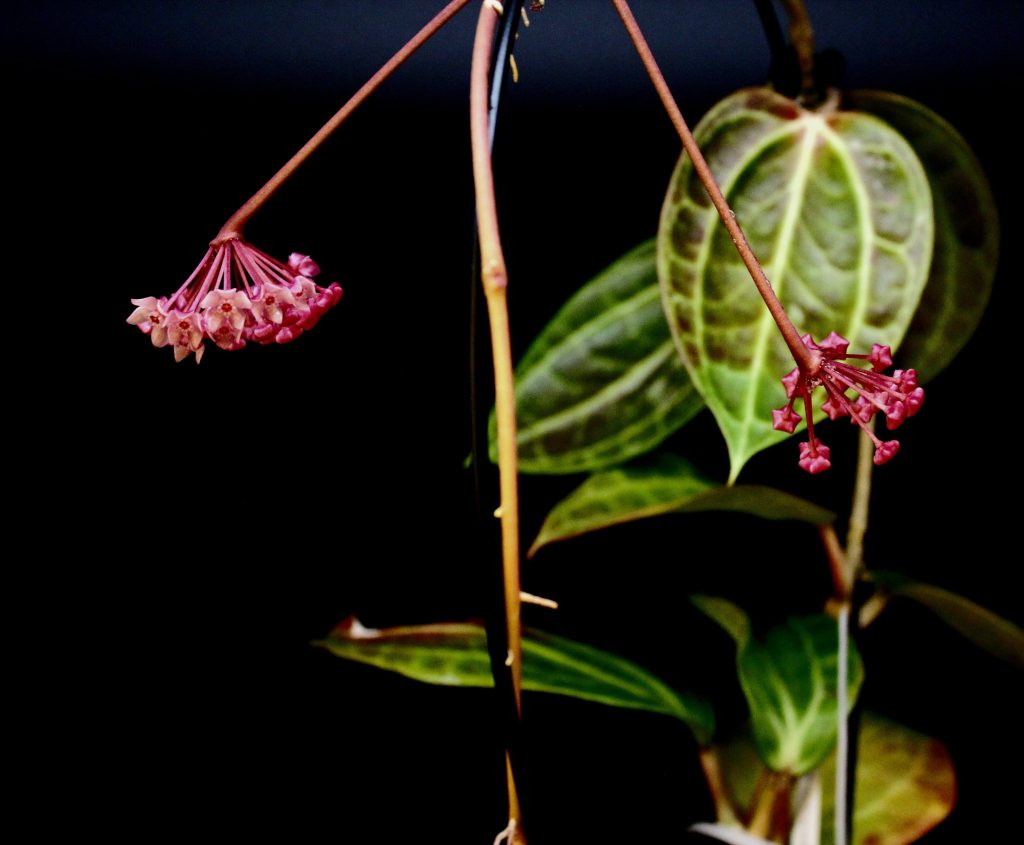
Plant Bro, which sells “rare” plants such as Hoya Sulawesi, said the pandemic rare plants boom has subsided. COURTESY PLANT BRO
Melinda Knuth, assistant professor and director of the cognitive behaviour lab in horticultural sciences at North Carolina State University, said the rare houseplant market is “difficult to quantify.” Along with the United States, the houseplant market in Canada boomed during the pandemic.
Knuth said the sales of houseplants and accessories have seen a steady increase year to year for over five years in the U.S. Sales of houseplants and accessories surpassed US$2 billion in the U.S. in 2021, according to the National Gardening Association.
In Canada, there’s a similar pattern of growing houseplant sales and the rise of “rare” houseplants during the pandemic. About $995.22 million Canadian dollars worth of potted plants were sold in 2021, up from around $903.83 million recorded a year earlier, according to Statista, a website providing market and consumer data.
Industry data suggests that houseplant purchasing has been popular for over 10 years, Knuth added. “What we saw during COVID-19 was an uptick in purchasing of plants overall in all categories,” she said in an email to inthehammer.com. “This is due to people spending more time at home and choosing to interact with their home spaces more. This is why we saw home projects, pet adoptions, and many home hobbies increase during the pandemic. There’s also been an uptick in spending on plants during the pandemic due to the the publication and promotion of how plants can positively benefit mental health.”

‘Plant parenting’ explodes during pandemic
Knuth provided her “40,000 foot view” of why houseplants are popular.
First, she said society is “urbanizing.” In 2023, over 80 per cent of the U.S. population lives in urban areas. “Because we live in small areas with little access to greenspaces, those spaces are brought indoors through herbs and houseplants,” she said.
Secondly, the disposable income for millennials is “vastly diminished” compared to previous generations in the estimated age group of 25-40.
“Because of this, millennials are getting married later in life, buying houses later in life, have larger amounts of debt than previous generations including student loans, and are having children later in life,” she said. “Younger generations are also less likely to save for the future and instead spend in the present.”
As a result of these conditions, she said many millennials and some older Gen Zer’s still live in rentals. “So, they buy houseplants to beautify their spaces and as a hobby,” she said. “Sometimes, these houseplants replace children. This phenomenon is called ‘plant parenting’ where these individuals are mimicking what it would be like to have children, but do so with plants by naming the plants, calling themselves a parent, and emotionally investing into the plant.”
Hamilton’s new plant shop and bakery Pinch has also jumped on the rare plant bandwagon. Pinch carries a limited selection of what they call “fancy plants,” or ones some people called “rare.” These plants are higher maintenance in care such as needing more humidity and light, are usually more challenging to find and therefore more expensive. Many are variegated or have splashes of colour other than green on them, the shop said.
Stef Dubbeldam, co-owner of Pinch, said the market is changing rapidly with most cultivars being bred with variegations that probably didn’t exist 10 years ago. “This means it’s perfect for those who love hobbies that are constantly developing – you can literally level up with plants,” she said in an email to inthehammer.com “My most common suggestion for people looking to start leveling up is to choose a plant you already own and find a cool or different variety/cultivar that maybe has slightly different needs but is easier to work into your current routine/set-up. That or get grow lights.”
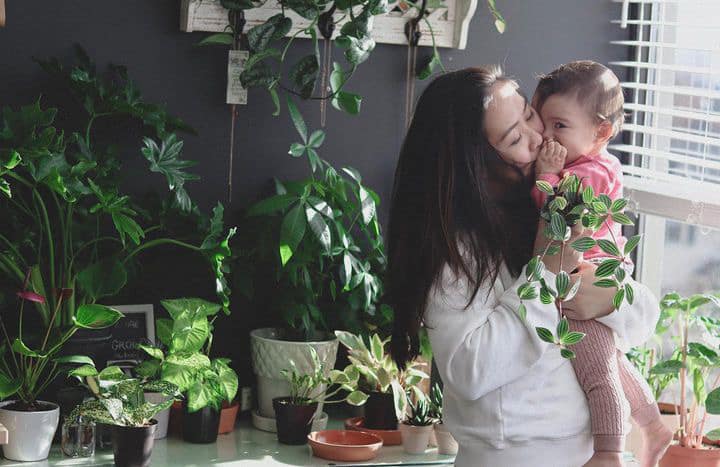
Abel Salisbury, a nurse from Hamilton, who started a YouTube channel devoted to her love for plants, said she still loves plants but is now too busy preparing for her summer wedding and caring for her two small children. COURTESY ABEL SALISBURY
Love affair with ‘rare’ plants fizzles
Some longtime and newer houseplant enthusiasts and sellers say the love affair for houseplants, particularly the “rare” variety, has fizzled for various reasons. Life has returned to normal and their pocketbooks took a big hit from skyrocketing expenses as a result of rising inflation and higher borrowing costs. Or they simply became too busy. Still, some pandemic houseplant parents are remaining committed to the hobby.
Tammy Edwards, co-founder of the Southern Ontario Plants for Sale, Trade or Free Facebook group, said while her “plant addiction” hasn’t waned, she noticed over the past year fewer people are buying plants in her group today compared to the height of the pandemic. She thinks it’s because the higher cost of living means less disposable income.
“But I have seen an increase in people trying to sell their collections, in some cases taking major losses on what they paid in the pandemic to what they are going for now,” she said.
Edwards grew up growing plants as her grandparents had a huge garden and her mom was an avid tropical plant owner. She said the demand led to her expanding the Facebook group from a Hamilton-only group to one for all southern Ontario enthusiasts of all kinds of gardening, including indoor, outdoor, hydroponics and Leca.
Edwards, who collects all kinds of plants, including “rare” ones, said the pandemic saw a 1,000-per-cent markup of plant pricing, particularly for the rare or trendy plants, that have since crashed to the prices they were pre-pandemic. She said she owns close to 100 varieties considered plants that are harder to find.
Edwards, who works as a service coordinator dispatcher and recently moved to Brantford from Hamilton, started the group because of her love for plants. She said she lives in an “urban jungle” of more than 300 plants. She started the page for buying, selling, trading and sharing free plants about nine years ago.
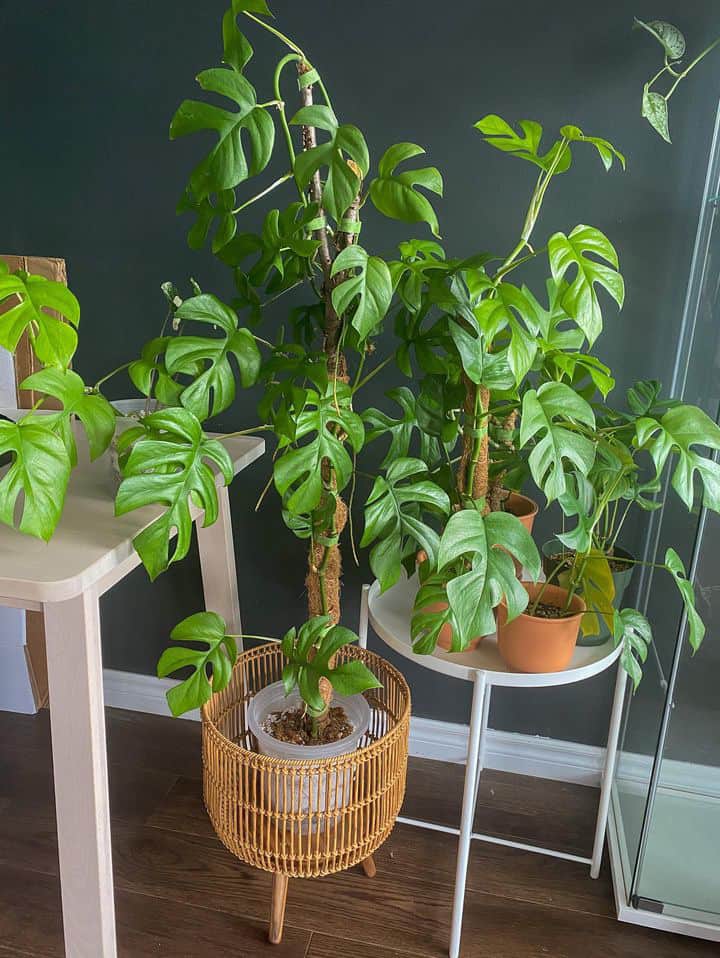
The Rhaphidophora Tetrasperma used to be one of the “it” plants before it was tissue cultured and produced in larger quantities. COURTESY ABEL SALISBURY
Hamilton nurse goes from owning 200 rare houseplants to 12
Abel Salisbury, a nurse working in a retirement home, went from having more than 200 houseplants (many of them “rare”) during the pandemic to only 12 today. The Hamiltonian, who started a YouTube channel devoted to her love for plants, said she still loves plants but got too busy preparing for her summer wedding and caring for her two small children.
“Right now, I’m still in love with my plants but not as I used to be,” she said in a message to inthehammer.com.
During the pandemic, she said she used to buy rare plants from Ecuador-based retailer Ecuagenera every three months and attended their events. “But now, I stopped because of a busy life. I have two little ones and couldn’t take my hands off them. And most of my precious ones sold for good and (I) killed the rare ones, as well. I don’t have time anymore.”
Salisbury said she started off collecting common plants in 2018, then got into “rare” plants after she found out about the plant community.
“I purchased my first ever rare plant in Japan,” she said. She paid $50 per stem for Rhaphidophora Tetrasperma, which is now commonly found in shops at lower prices.
Then she imported a huge Monstera Albo with mostly white leaves from Thailand for US$350. And she was hooked.
At one point, she said she lost $1,500 to a seller in Indonesia who scammed her.
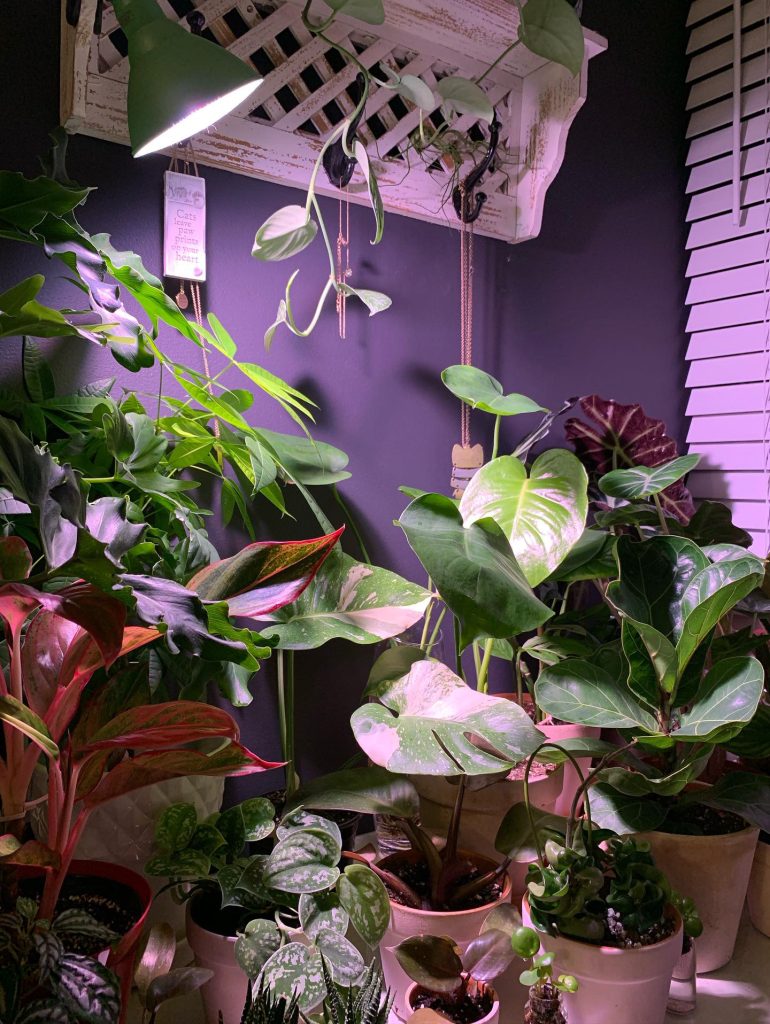
COURTESY ABEL SALISBURY
Kathy Povrzenic, a welding and robotics technician in Hamilton, has been collecting houseplants for about 20 years.
Povrzenic, who said she was influenced by her parents who are avid gardeners, has over 500 houseplants.
“Plants bring me joy and I absolutely love having them all over my home,” she said in an email to inthehammer.com. “I mainly focus on trying to get more rare plants now, although I still have some ‘common’ ones that i just adore. … I have always had a love of plants, indoor and outdoor and i don’t see that changing.”
For her, taking care of 500 plants is “a second job and does take a lot of time.”
For some, it was a fad during the pandemic. She had seen those people sell off their entire plant collections. “That being said, there is still a huge plant community and people are always trying to acquire the next ‘it’ plant,” she said.
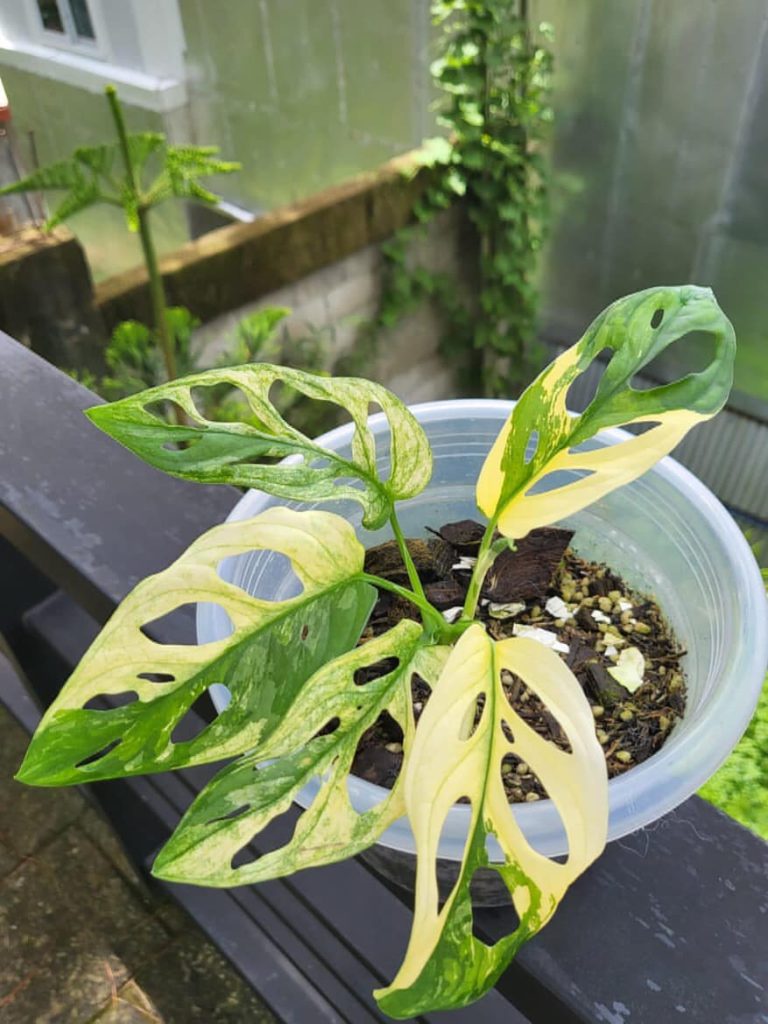
For some, buying “rare” houseplants like this Variegated Monstera Adansonii became a fad during the pandemic. COURTESY ELE AGUILA VIA FACEBOOK
Some ‘rare’ plants are ‘weeds’ in other countries: shop owner
Mishaal Ali, owner of Ecouarium, a speciality and exotic plant shop near Edmonton, believes he was among the first sellers in Canada of rare plants. Ali has been a plant enthusiast for about 20 years – he has been in the plant-selling business for 15 years and has been running his retail shop for seven years. He said before the pandemic he struggled to sell “rare” plants such as Monstera Albo and Thai Constellation.
“I couldn’t sell them for 40 bucks, pre-pandemic. A year later during the pandemic, the same plant, instead of $40, I was now selling for $400,” he said in a phone interview with inthehammer.com. “And within about another year or so, the same plant went from $400 back to about $100.”
In the midst of the pandemic, people were even paying $100 to $150 for a Monstera Albo stem, not necessarily with roots, which had a node where roots could grow, he noted. He said he observed at least one new shop opening every week during the pandemic.
“People were fighting over it on online auctions and stuff like that,” he said. “We were selling two, three-leaf plants for a couple hundred bucks (pre-pandemic) and in the middle of the pandemic it was a couple hundred bucks for a node.”
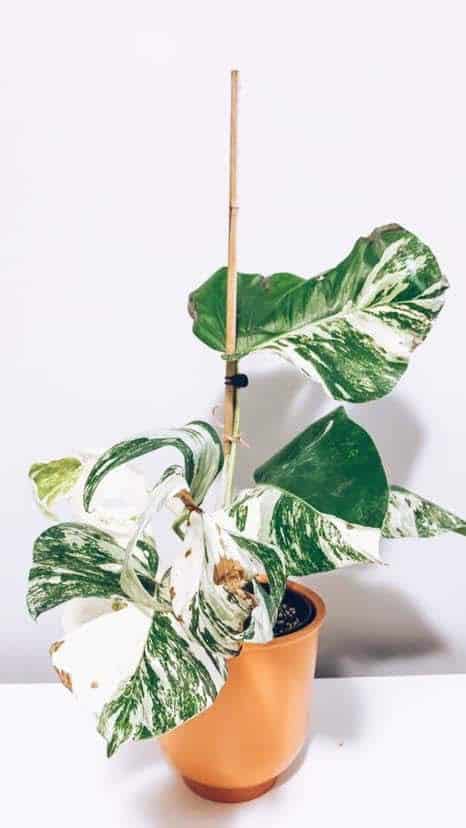
In the midst of the pandemic, people were willing to pay $100 or more for a stem of this Monstera Albo, which was a gamble since the buyer had to place it in a rooting medium and hope it developed into a full plant like this one. COURTESY ABEL SALISBURY
He said he knows some suppliers who got rich in Indonesia and Thailand because their timing was right in selling these “rare” plants. Today, he said they’re still in business but not selling as much as they did before.
“My friends in Thailand and Indonesia, some of them are millionaires now,” he said. “The cost for them is nothing, probably just a few bucks. They went from selling them for $10 to $2,000 for a one-leaf plant. This all happened in less than a year. … It was absolutely crazy. … It’s not even a rare plant, nor is it a rare plant that’s difficult to grow. … it was just people wanted it first, so they can grow it, and make divisions and sell it and sell more to make more money out of it.”
He said he started buying more of them around the time of the pandemic because people would ask for them. “I would bring them in and they would start selling very fast and after a while it just went absolutely nuts,” he said.
He said the “rare” plants that had gained so much popularity during COVID are “in-demand” plants rather than rare.
“All the plants people were claiming as rare plants, none of them are actually rare. It’s just plants that exploded and a lot of people decided they wanted them and so the supply was much lower than the demand,” he said. “I think it’s just pure marketing. They sound more appealing and sound more expensive when they call them rare plants. … There has to be some justification as to why you’re calling it rare, other than many people want it and the sellers are sold out now.”
He added that they are even considered invasive like weeds that people cut and throw them in the trash in places where they naturally grow in the wild.
But that changed when the pandemic arrived and these “rare” plants become sort of a “status symbol.”
Today with the pandemic over, he said the “rare” plant market has gone from being a “global phenomenon” to becoming “overinflated” to the point that the bubble has burst in Canada.
“I think the market will always be there,” he said. “We’re down to selling one-tenth of what used to be sold … They gain popularity and then they fall out of popularity. And when they fall out of popularity they no longer have as much value.”
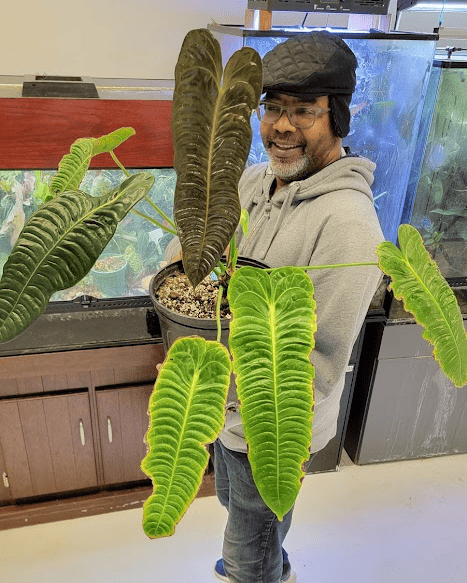
Mishaal Ali, owner of Ecouarium, imported “rare” plants like this King Anthurium for his shop during the pandemic. He has since refocused his business on terrariums and vivariums. COURTESY ECOUARIUM VIA FACEBOOK
Today, he no longer sells the once-trendy “rare” plants, focusing now on terrariums and vivarium plants, many he said are truly rare or hard-to-find specimens.
He recalls selling a “rare” plant such as a Monstera Obliqua for about $2,000 for a one-leaf specimen that was lightly rooted or even not have roots, though it at least had a viable node, where roots had potential to grow after the plant was placed in water or some rooting medium.
The most expensive plant he sold during the pandemic was a variegated Philodendron Billietiae for $7,500, which was the typical price during the pandemic. Today that plant’s price plummeted to $500-$600. Ali exited the rare plant market about two years ago and rebranded his company to focus more on terrarium and vivarium miniature plants.
“There’s a mass exit – there’s tens or hundreds of them (‘rare’ plant sellers) trying to get out of it now,” he said. “The market has crashed big time … there really wasn’t thousands of people wanting these plants. … Some people got in early and made really good money and sold while things were still at peak, but the majority are stuck now.”
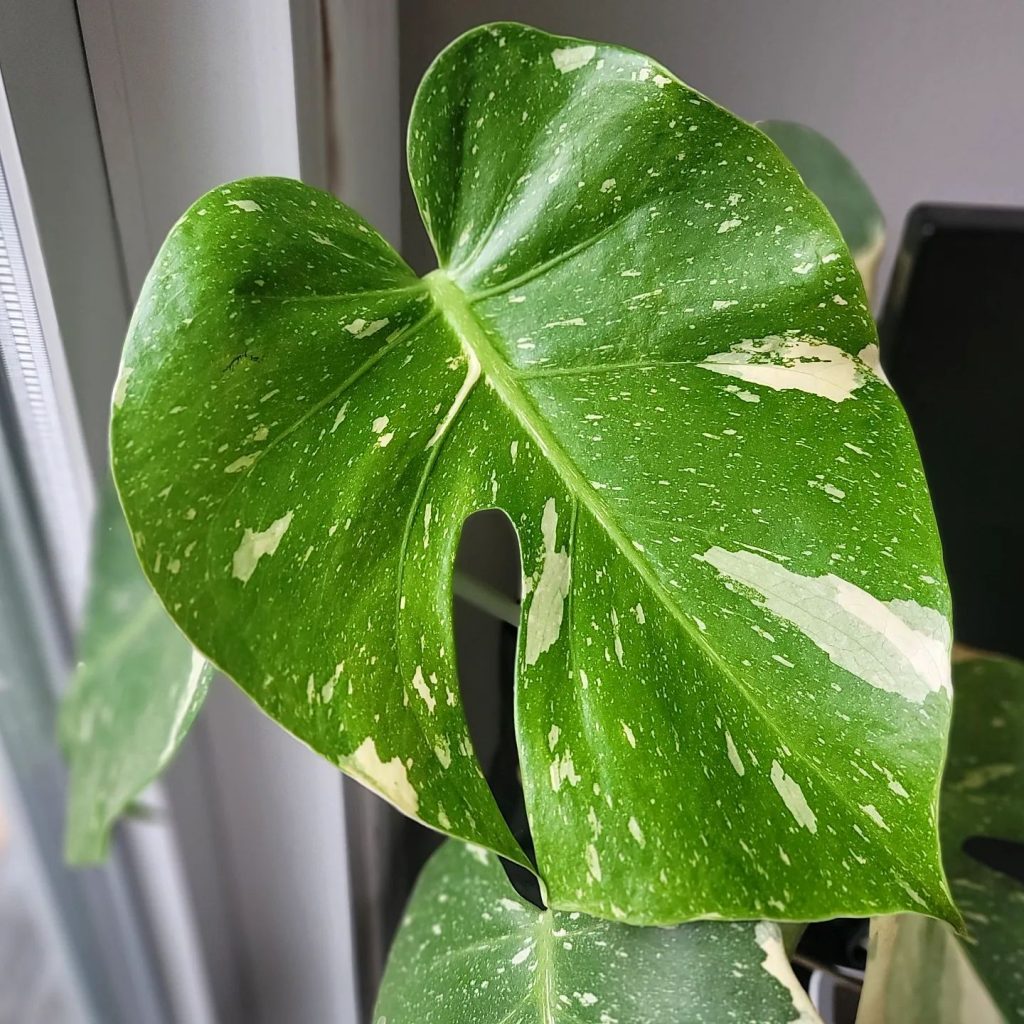
Plants that became hot during the pandemic like the Monstera Thai Constellation actually aren’t “rare,” says Mishaal Ali, owner of Ecouarium specialty plant shop. COURTESY TROPICOUTURE PLANTS
Canadian houseplant market cools but die-hard collectors aren’t abandoning hobby
Although the pandemic houseplant boom is over, Burrell of Harper’s Garden Centre said Hamilton still has a healthy market for rare plants or those that may be newer or not the standard variety.
That’s the reason why Harper’s continues to carry these unique varieties. She said Harper’s brought in “rare” plants for the first time during the pandemic, capitalizing on the houseplant craze.
She said tissue culturing, or the mass production of plants through cloning, has made more plants accessible.
“A lot of stuff that was considered a rare plant during the pandemic, they were never rare, and the plants that are rare are still very expensive and still hard to get,” she said. “Tissue culturing … has really changed the game.”
Burrell said serious plant collectors are still in love with rarer varieties even if they command higher price points. Some even import them from places overseas like Thailand. At a few local greenhouses like Harper’s, they source their unique varieties from Canadian sellers rather than import them for “logistical reasons.”
Harper’s, for instance, recently introduced the once-super pricey dark velvety-leaved rare plant called El Choco Red Philodendron.
“It used to be one of the ones that was actually very expensive and more or less impossible to get, but now it’s been tissue cultured so we have it for 25 bucks in a four-inch pot,” she said.
During the pandemic, she said people would pay something like $1,000 for a Monstera Adansonii Japanese tricolour, which is now at the garden centre for $150 for a 2.5-inch pot.
Christian Ylagan co-owns London, Ont.-based Tropicouture Plants with Jason Collins. Tropicouture Plants is an online shop specializing in rare plants that ships across Canada and does in-person deliveries in southern Ontario.
“We certainly have found that the market has softened compared to the all-time pandemic high,” he said in an email to inthehammer.com.
The “return to normal” means people don’t have as much disposable income as they did when they were “house-bound” because of the lockdowns during the pandemic, he explained.
“What we’re seeing at least from our business experience is that there are fewer people who are just jumping into houseplants because it’s trendy (as many did at the height of COVID) and a smaller but more dedicated group of ‘true’ collectors is emerging,” he said.
These days, he said more dedicated collectors who are looking to add to their specialized collections appear to be driving the rare plant market. “For example, we’re starting to see higher prices on newer anthurium hybrids, while the prices of what used to be ‘rare’ plants have started to come down or stabilize,” he said.
He observed that some businesses who were even selling only through Instagram or Facebook have abandoned their ventures and reverted back to doing primarily plant appreciation pages.
“Wholesale selections have also been scaled back, with many growers focusing more on selling off mother plants for people who are looking for individual statement pieces,” he said.
Yet suppliers were seeing demand from newer species people were craving and some couldn’t keep up, Ylagan noted.
He said Tropicouture Plants doesn’t consider it a sound business model to only carry the super premium species that sell for three to four figures if only a handful of people can get them. “Those specimens are usually also sold at pretty high market prices by suppliers because it also takes a lot of time and effort to produce them,” he explained.
Though his business is always looking to bring new specimens, they want to keep prices competitive and profitable.
“There’s a pretty clear point of diminishing returns in selling ultra rare plants in a contracting economy like ours, so we think where the market is or should be going is finding that balance between novelty and sustainability,” he said.
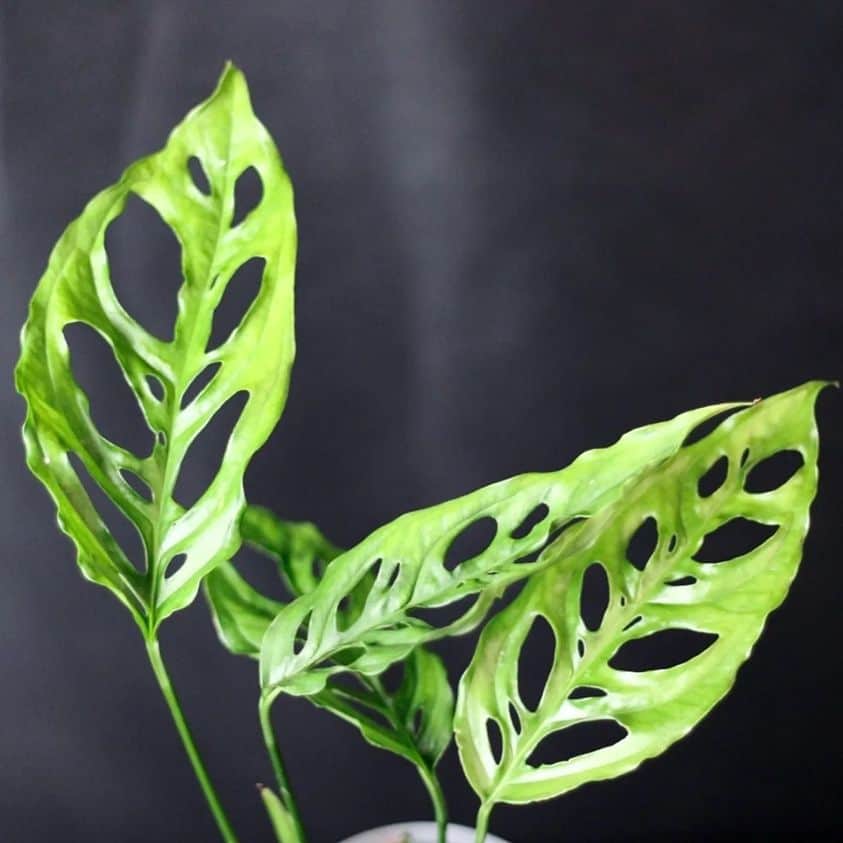
Monstera Obliqua “Peru” specimens were selling for at least a thousand dollars during the pandemic. COURTESY TROPICOUTURE PLANTS VIA FACEBOOK
inthehammer's Editorial Standards and Policies advertising





